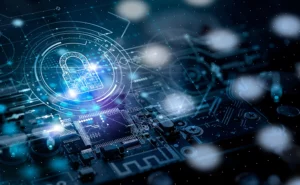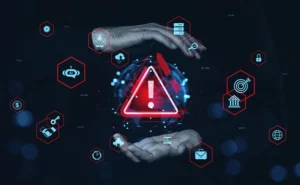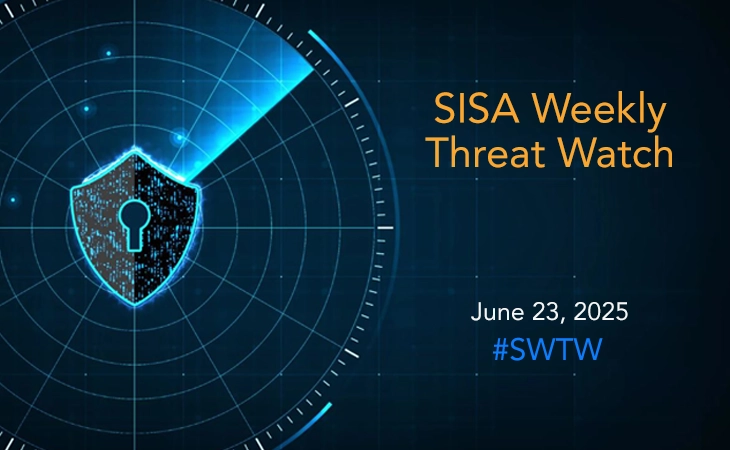

The six phases of threat intelligence lifecycle
The threat intelligence lifecycle is the structured process by which threat intelligence is gathered, processed, analyzed, and applied. It's a continuous and iterative cycle involving six phases, that empowers cybersecurity teams to predict, detect, and respond to threats with enhanced efficacy.
In an era where the cyber threat landscape is rapidly evolving, the significance of threat intelligence has never been more pronounced. For organizations striving to safeguard their digital assets, the role of threat intelligence in advanced threat hunting has become paramount. Threat Intelligence refers to the knowledge and information about existing and potential cyber threats that can pose risks to an organization’s systems, networks, or data. It involves collecting, analyzing, and interpreting data from various sources to understand the tactics, techniques, and procedures (TTPs) used by threat actors.
The threat intelligence lifecycle is the structured process by which threat intelligence is gathered, processed, analyzed, and applied. It’s a continuous and iterative cycle that empowers cybersecurity teams to predict, detect, and respond to threats with enhanced efficacy. Threat intelligence is built on analytical techniques honed over several decades by government and military agencies.
The threat intelligence lifecycle focuses on six distinct phases, which are explained below:
1. Direction:
The lifecycle commences with planning out the goals, objectives, scope and methodology for the process of collecting threat intelligence based on the requirements of key stakeholders involved. Requirements identification is critical for ensuring that threat intelligence processes correctly align with business and risk management objectives and provide the output that can be actioned by relevant stakeholders. During this stage security teams set out to explore who the attackers are, their respective motivations, what the possible attack surface may look like and what measures need to be taken to improve defenses against a potential attack.
2. Collection:
Collection is the process of gathering information to address the most important intelligence requirements. Information gathering can occur organically through a variety of means, including, pulling metadata and logs from internal networks and security devices, subscribing to threat data feeds from industry organizations and cybersecurity vendors, holding conversations and targeted interviews with knowledgeable sources, scanning open-source news and blogs, scraping and harvesting websites and forums, and infiltrating closed sources such as dark web forums.
3. Processing:
Processing is the transformation of collected information into a format usable by the organization. Almost all raw data collected needs to be processed in some manner, whether by humans or machines. This involves filtering out irrelevant data that was collected incidentally, structuring data to make the analysis phase easier, enriching data with contextual information and grouping similar data together that can be used during the analysis phase.
4. Analysis:
Analysis is a human process that turns processed information into intelligence that can inform decisions. During the analysis phase threat intelligence analysts work to create meaningful context and actionable intelligence out of the data that has been formatted and structured during the processing phase. Key aspects in this phase involve adversary profiling, threat correlation and behavioral analysis.
5. Dissemination:
The Dissemination involves the distribution of intelligence reports to relevant stakeholders and encompasses the cooperative exchange of intelligence with trusted entities. During this stage, the threat intelligence team presents their analysis in a report format fit for the intended audience outlined in the planning stage. Ensuring secure distribution and optimal community collaboration are critical during this phase.
6. Feedback:
The final stage of the threat intelligence lifecycle involves getting feedback on the intelligence report to determine whether the analysis was timely, relevant, and actionable. Stakeholders may have changes to their priorities or adjustments to how data should be disseminated or presented. Establishing performance metrics to measure the effectiveness of the threat intelligence and identify opportunities for continuous improvements are important aspects of the feedback gathering phase.
The threat intelligence lifecycle is not a linear process, but rather an iterative cycle that requires constant refinement and adaptation to the ever-changing cyber threat landscape. Cybersecurity teams can apply the threat intelligence lifecycle to analyze a range of threats including geopolitical risk, vulnerabilities, cybercrime groups, advanced persistent threats, and fraud threats among others. By embracing this structured approach, cybersecurity professionals can synergize their threat detection, analysis, and research initiatives, ensuring that the intelligence is relevant, actionable, and aligned with the organization’s unique risk profile.
SISA’s ProACT MDR platform offers actionable threat intelligence through integration of 70+ threat intel feeds, IOCs from forensics investigations and access to daily actionable Threat Advisories to offer enhanced threat hunting. To learn more, request a demo.
References:
- https://www.recordedfuture.com/threat-intelligence-lifecycle-phases
To get daily updates on the critical vulnerabilities being exploited by threat actors, subscribe to SISA Daily Threat Watch – our daily actionable threat advisories.
Latest
Blogs
Whitepapers
Threat-a-Licious
Customer Success Stories

SISA is a Leader in Cybersecurity Solutions for the Digital Payment Industry. As a Global Payment Forensic Investigator of the PCI Security Standards Council, we leverage forensics insights into preventive, detective, and corrective security solutions, protecting 1,000+ organizations across 40+ countries from evolving cyberthreats.
Our suite of solutions from AI-driven compliance, advanced security testing, agentic detection/ response and learner focused-training has been honored with prestigious awards, including from Financial Express, DSCI-NASSCOM and The Economic Times.
With commitment to innovation, and pioneering advancements in Quantum Security, Hardware Security, and Cybersecurity for AI, SISA is shaping the future of cybersecurity through cutting-edge forensics research.
Company
Resources
Quick Links
Copyright © 2025 SISA. All Rights Reserved.
 USA
USA India
India APAC
APAC Middle East
Middle East Global
Global





 Facebook
Facebook Linkedin
Linkedin  X
X Youtube
Youtube





